Being Invited as a Speaker at the World's Largest Business Conference, Learnings from my First Thanksgiving and what "Seva at Scale" means to me
November (& October) Newsletter
Hi! If you’re new here: I’m a 20 y/o inventor, researcher, emerging tech builder and founder following the American dream to the best of my ability through being a tech entrepreneur while building in public to share my learnings, capturing the authentic highs and lows.🇺🇸
Currently, I’m following an unconventional path in which, choosing my own education in the real world over formal schooling sitting in a classroom, I spend my time establishing technology companies as the Founder (including 4 US patent-pending projects) at the intersection of AI and other kinds of emerging tech such as gene editing to help many people as I can :)
Previously, some of my highlight milestones in business include: winning the international-level Honorary Global Entrepreneurs Award in July 2024, an award recognized by the President of Nigeria, for my potential as a youth in tackling food insecurity; and for my music career in the tabla (Indian drum) - I was recognized as being the first individual to study and then implement the world’s first Universal Indian Drum Notation system with tabla.I consider some of my biggest influences in business to be Kabir Mathur (Founder and CEO, Leen), John Spence (Founder and Chairman, Karma Group Global), Brett Adcock (CEO of Figure AI), Sam Walton (Founder of Walmart), The Nathoo Brothers (Co-founders, TKS), Kuljit Bhamra MBE (prolific record producer), Ray Kroc (businessman behind McDonald’s), John D. Rockefeller (Founder of Standard Oil Company) and Benjamin Franklin (a Founding Father of America).
💬 Like it’s with previous newsletters of mine, I’m writing this in reverse order to let you picture in your mind my growth - engineering from my outcome by the end of the month to where I was right at the beginning of October. As there’s quite a bit I’d like to share with you the reader, let’s ‘Eat the Frog’ by beginning with work related stuff (part 1)! Then we’ll get onto any personal growth I’ve made (part 2)…
Before we begin, I must ask you and for a reason (which I’ll reveal later on this newsletter, and where I fall into):
Part 1 - My Professional Life🕴
An Update on Building in Public with my AI and Gene Editing Casasva Project tackling Hunger—includes Securing a University Collaboration, Needle-Moving Meetings, Building and Developing Constantly in AI and gene editing, and Preparing for Funding🧬🪰🌱🍠
*📣 Call to Action: If you’re an investor/funder/grant giver, reach out to invest in my story of seva (selfless service!)*
I used most of my professional time to do a couple of things: firstly, making tangible progress with my project by building in public through sharing weekly vlog updates and secondly, focusing on the three following KEY goals: 1) establish project ready for grant funding to allow lab R&D phase one, 2) applying to grant programs and speaking to funders to learn what they look for in applicants, and 3) learning from different stakeholders’ knowledge for strengthening the following involved aspects of my project - science, policy, business and communication (i.e. wearing a few different hats!🎩).
Here’s my Milestones Summary of this past Month (goals I met)🎯:
+ Secured collaboration with Dr. Vincent Fondong of Delaware State University and his enthusiastic team, the leading Cassava mosaic disease researchers and only professor in the US working in this field, expecting to begin lab work after my first funding round is secured. Purpose of this first phase of lab work is to demonstrate gene editing Cassava before gene editing whiteflies, to prove the latter is more effective (my US patent-pending solution I invented!) - achieved 21st October 2024
+ Gained grant application letters written by Dr. Fondong to apply to the Gates Foundation and National Science Foundation, where he himself has a track record of securing in total over 9 million USD in grants from both. - achieved 21st October 2024
+ Applied to: Thiel Fellowship, Magnificent Grants, and Emergent Ventures so far, with many more applications in process. Had an interview. - achieved 2nd October 2024
+ Had meetings with representatives at: Cornell University, Delaware State University, Stanford University, International Institute for Tropical Agriculture, Seedstars, The Villars Institute and The Food and Agriculture Organization of the United Nations. - achieved 30th November 2024
+ Began talks with media outlets including BBC News, BBC Sunny and Shay Radio, Sunrise Radio, Desi Blitz and Times of India, to strengthen the communication aspect of my project. Also, I’ll be a guest on the BioBytes podcast soon hosted by Nairi Shepherd and Mansi Bhandari! - achieved 30th November 2024
+ Created a project memo, for different stakeholders in science, government, business and communication to view. - achieved 30th November 2024
Here’s what’s left to do now for this phase of my project (time-bound goals)🎯:
→ Be awarded a grant of around 100k USD aiming by end of Q1 2025, now that I’ve set my project up for funding, covering lab work at Delaware State University and travel costs.
→ Complete and release the two products of my project by 31st December 2024: AI platform GeneGuard.ai and the simulations of modified whiteflies, using the platforms Bubble.io and Blender respectively to develop it. As I believe in self-reliance and don’t have prior technical knowledge in this, I will spend time collecting info, figuring it out and building it on my own then iterating as I gather feedback from users.
→ Find and secure a molecular entomologist from an Ivy League institution (note: after conducting a search, there’s none I’ve found in the US specialising in whiteflies, so I’m searching for one in mosquitos as both their gene mechanisms are somewhat similar) by 31st December 2024.
#BuildingInPublic.. Here’s the progress I’ve made since my last newsletter - you can view all my 5 min weekly video updates I delivered posting at the end of every week for the past couple of months below🎥:
Video 5: Nov - week 3
Video 4: Nov - week 2
Video 3: Nov - week 1
Video 2: Oct - weeks 2 and 3
Video 1: Oct week 1
Learnings from my Building💭:
You must demonstrate self-reliance: build it completely by yourself at the FIRST stage, so you can create it to your liking and show you can figure it out. Later when you are scaling, then you can delegate to different roles and do only what is necessary as the Founder and CEO.
Prevent ALL ‘blockers’ from happening: for me, this was procrastination, overthinking, lack of independent and original thinking and self-limiting beliefs. These stemmed from being in an environment that’s not conducive to success, lack of self-drive and I think a common one among teenagers—inconsistent sleep schedule. I’m not perfect but I would say significantly improved in these by having my purpose in mind at all times (morning, afternoon, evening and during my dream). Antidote: What led to the change was simply me asking myself "Why am I doing this? Is this worth it? Am I happy with my outcome?".
The only reasonable way to live in the world is without rules: It’s better to be a pirate than in the navy. I found that no one in the world is doing work in Cassava and whiteflies from an entrepreneurial perspective, all are in research and academia (which is ok!). I want to take mine and their ground work to the next level by activating as an entrepreneur to maximize positive impact. (“I spotted an opportunity to create Karma - land was cheap, Western tourists were flooding in, so I started my first hotel in Goa. Then, I implemented my dream! - John Spence, Founder of Karma)
20% inspiration, 80% perspiration: A good rule to live by is learn a bit, and execute mostly. From what I’ve seen, most people trip up in the latter. Coming back to blockers, execution can be flawless if you are able to minimize challenges and constantly gain feedback/collaborate with people.
Contacts, Contacts, Contacts: Constantly gain feedback/iterate. Most of the people who moved the needle for my project hasn’t been through cold outreach, all through my network. (example: Dr. Michael Snyder of Stanford University introduced me to Dr. Dinesh-Kumar of UC Davis, who in turn introduced me to my now-collaborator Dr. Fondong).
Obsess over one project at a time: Generally, it’s best to focus on one thing at a time with full focus.
Be patiently impatient: As an ambitious person, we tend to wait for results. Just keep building along the way (e.g. I submitted for grants and kept building my AI and gene editing platforms), the results will follow the more excellent and sincere you are.
Desire is direction: Do actions with common sense. If you don’t know something, use your gut and intelligence to take actions that move the needle.
Do work from the heart (then the brain): Genuinely enjoy what you do and find a way to implement that! Just like creating music from the heart or in any other art, I believe my work in technology is a form of art. Learn to like the journey to the outcome rather than experiencing pain until the outcome happens then enjoying! Here’s a reflection I shared on TKS Slack when my friend Everett in the robotics field wrote the following:
Dream about your project: I had a dream the other night that I was eating Cassava with a Cornell researcher at a pub the other day asking her questions the day before I had a meeting with her.. Not kidding! It’s a good sign if you dream about it, as my mentor said you have to be obsessed with what you do to the level it’s in your subconscious (more on consciousness later, as it’s a fascinating science). The majority of people think about what shopping they’ll do in the evening or playing golf with their mates. I think you should learn but not focus on the past, but focus on the present and future and think about ‘what have I created today?’. Once your passion has been integrated into your subconscious, then dream with your eyes open and try creating value for yourself and thereby society at scale!
Last but not least, have lots of coffee (or at least keep a flask of earl grey to sip throught the day, my favorite)☕️..
..
Was building in public worth it? My Favorite Result of Building in Public for 3 months = Recognition, Appreciation, and Gratitude🌎
It’s truly heartwarming and beautiful that you all are appreciating the work I do, receiving e-mails like these from around the world - from Nigeria to Vancouver!:
Update on AI x Cybersecurity Project Series🤖💻🔐
Another series of projects I’ve continued to build on is in the emerging field of AI and cybersecurity. The purpose of my work here is for aiming towards an internship at a high-growth startup in the field - with hope of learning directly from the Founder and CEO’s perspective on running a company, fundraising, managing people, and more… Skills I can use to establish my own businesses with greater speed and accuracy (2 important qualities in mastering entreprenership).
After focusing on learning technically about this new field throughout the course of September, I began to implement my learnings during the next couple of months in the form of a series of project (4 parts), gaining feedback along the way from experts from Accenture, small to medium sized business, cybersecurity victims and Leen.
Since everyone loves videos and visualizations, here’s a sneak peek - explaining an ‘AI-Powered IDS Platform’ I built in under 24 hours using threat intel from my mentor Kabir Mathur’s startup, Leen.dev:
Learnings from building are the same as my gene editing project except one I didn’t mention: if it’s challenging don’t be afraid, it’s a sign that you’re learning something new. It’s all just a matter of: gaining some info through raw understanding of the topic from first principles thinking and figuring out how to implement that.
If you’re interested, you can check the rest of the series of cybersecurity projects I built on my portfolio here.
Highlight Meeting: Learning Directly from the Mastermind behind The Knowledge Society - a successful business which generates $18m in annual revenue (youth accelerator where alumni have raised $80M to date): Nadeem Nathoo, Co-Founder of TKS
My one-to-one call with Nadeem Nathoo (Co-founder of The Knowledge Society (TKS):
At the end of November, I finally spoke to one of the other bosses of TKS who I never met.
Our around 40 minute 1-1 call focused on scaling my (AI and gene editing) project, discussing funding strategy and project positioning. Nadeem advised prioritizing grants (FAO, United Nations) over private investors for research funding.
Going forward, I have to look into long-term risks, particularly ecological impacts, and need for strong execution. He highlighted the importance of strategic networking and being articulate when pitching my project to others.
Insight: It’s a matter of answering well and how well you answer inpromptu (in terms of your story, content, delivery, technical knowledge and energy) to investors.
He also mentioned how it’s important not to deviate from your focus on this path, falling into “traditional paths”, and not giving up and trying until you achieve your desired outcomes.
Thanks again to Nadeem for his time and insights.
Side note: I believe Nadeem is probably better than almost anyone on the planet (along with his brother Navid) at identifying human potential among youth taking an unconventional path - like my peers I’ve seen at TKS. Saying this as I believe in TKS’s mission as they are already revolutionizing the school system positively, worldwide.
Meetings, Meetings and Meetings—for my AI and gene editing project📞
Other than execution, it was meetings that moved the needle in my project (a form of gaining knowledge I like is to quiz the hell out of people who are experts in the field! It’s a win-win situation, as experts also learn by talking about their project as a form of revision.).
I had the pleasure of learning from a series of stakeholders through my calls that included top scientists, policy experts and agricultural organizations for me to gain knowledge and enhance credibility on my project.
To make it simple for you, I included a hat next to each person as to which hat I wore based on what kind of stakeholder they are (science, policy, business or communication). Like this →🎩
Call with Seren Villwock PhD Candidate (of Cornell University) - Wed 4th Dec - 🎩 Science
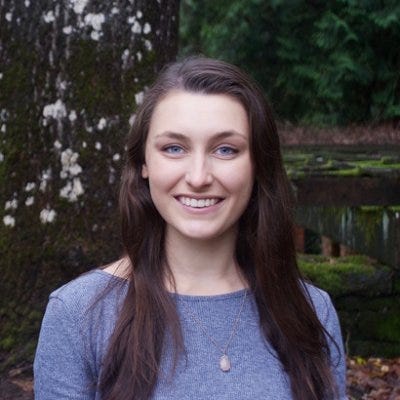
Objective of our brain dates:
To gain connections and learn how I can conduct my work in the US given my goals in the country. We discussed several key insights that will significantly advance my project.
What we discussed:
Seren validated my focus on an entrepreneurial path, emphasizing the uniqueness of a business-driven approach in the traditionally nonprofit cassava research space. She also shed light on the regulatory complexities of genetically modified insects, highlighting transboundary risks and suggesting that gene editing could streamline approval processes, especially in Africa. Learning from existing gene-drive mosquito projects was another critical recommendation, as it could help me anticipate challenges and refine my strategy.
Seren introduced valuable networking opportunities by pointing me toward experts from the African Cassava Whitefly Project and other cassava-focused networks, which could address the molecular entomology gap in my team. She emphasized the importance of involving experienced collaborators for grant writing, particularly for Gates Foundation and NSF grants, to strengthen my applications and improve funding prospects. Her explanation of IITA’s secure field testing facilities clarified how I might approach field trials for gene-edited cassava in the future.
Finally, Seren’s insights underscored the importance of building credibility by leveraging my existing collaborations, such as with Dr. Fondong, to align my project with funders' expectations. Her practical advice and connections provided a clear roadmap for addressing regulatory, technical, and funding challenges, significantly moving the needle on my project.
Action items:
I've set myself a few action items by the end of December given her advice, which I thought I'd share with you:
1. Reach out to contacts and look into the resources she shared
2. Engage with grant experts/individuals to write proposals
3. Pursue collaborations with IITA & cassava whitefly experts
4. Find a molecular entomologist and form further collaborations as necessary.
It was lovely e-meeting Seren. Thanks again for her time and insights.
Call with Jini Sebakunzi (Mentor at Seedstars and Villars Institute) - Mon 25th Nov → 🎩 Funding
It was good e-meeting Jini after I first met him in-person Villars where he guided me on my project 1-1.
Objective of our brain dates:
To update Jini on my progress, connections to Gates Foundation and advice on funding given his role as a funder in Seedstars.
What we discussed:
The call with Jini provided valuable insights and actionable steps for advancing my cassava project. First, Jini reinforced the importance of clearly defining and communicating the value proposition to potential investors and stakeholders, emphasizing the need to simplify technical concepts into digestible, compelling narratives. This approach will help build interest and confidence, especially when pitching to diverse audiences like grant organizations and angel investors.
Jini’s advice on tailoring pitches to align with the goals and language of specific organizations, such as the Gates Foundation, was particularly impactful. He highlighted the need to focus on how my project benefits farmers and addresses food security, which are priorities for these entities. By adapting my story to their interests, I can significantly increase my chances of securing funding.
Jini also provided a framework for strategic fundraising, suggesting I focus on a smaller pool of high-potential investors and grants, rather than casting a wide net. He emphasized leveraging existing collaborations, like my partnership with the professor at Delaware State University, as a competitive advantage to demonstrate readiness and credibility.
On the timeline and roadmap, Jini stressed the importance of quantifying milestones, such as the number of trials or the scale of commercialization, to make the plan practical and appealing to investors. He also pointed out that securing early-stage funding is about inspiring confidence in my commitment and resilience, which investors prioritize alongside the project's potential.
Finally, Jini offered to tap into his network, including contacts at the Gates Foundation, to support my project, provided I craft a clear and concise pitch tailored to their priorities. His advice on understanding stakeholder motivations and aligning my pitch accordingly will be instrumental as I move forward.
Action items:
I've set myself the following action items over the coming weeks given Jini’s advice:
1. Continue following up/applying to relevant funding programs and contacting angel investors
2. Tailor applications to their needs, along with my completed AI platform and gene editing whiteflies at mass scale simulations
3. Clarify project milestones and outcomes with IITA, regarding questions such as with the timeline and further detail on transboundary regulatory concerns.
Call with Guillame Taylor (Principal, Ubumtu; Mentor at Villars Institute) - Thu 14th Nov → 🎩 Finance
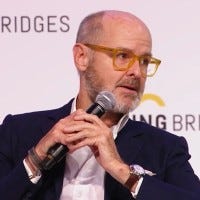
Objective of our brain dates:
Guillaume and I discussed my project aimed at both modifying whiteflies and enhancing cassava's resistance against a disease, with an emphasis on gene editing and insect modification. We also explored the potential for creating a self-sustaining company to manufacture the necessary food for the insects and plants, and the importance of a clear and compelling presentation for securing funding. Lastly, we agreed on the creation of a concise document outlining the project's execution plan and the role of the applicant.
What we discussed:
I Seeked Guillaume's Expertise in Nature, Sustainability and Finance
Guillaume, who called in from where he lives in a town in the Swiss Alps. I previously met Guillaume at the Villars Institute where I studied ecopreneurship. I seeked Guillaume's expertise in finance and sustainability for this project I’m working on.
Cassava Mosaic Disease and Solutions
I explained work focused on tackling the agricultural disease called Cassava Mosaic Disease, which affects the third most consumed carbohydrate in the world, cassava. He highlighted the disease's prevalence in Africa, particularly in Nigeria, where it threatens food security and affects 26.5 million people, putting 9 million smallholder farmers at risk. I mentioned that the current methods, such as pesticides, are ineffective and environmentally damaging. I proposed two methods to tackle the issue for the first lab R&D phase: targeting the primary vector, the Whitefly, and utilizing prime editing, a gene editing method, to impart resistance to cassava plants. Also, I mentioned the AI part where an AI platform, GeneGuard.ai, would be used for data analysis for more fast, better and efficient data analysis and identifying the right target genes to modify within a whitefly (for researchers).
Enhancing Cassava's Disease Resistance
I mentioned my collaboration with Professor Vincent Fondong of Delaware State University. The project has received support from organizations such as GSK, International Institute for Tropical Agriculture in Africa, Villars Institute, and the United Nations Food and Agriculture Organization. My goal is to collaborate on a scalable strategy to address food insecurity and contribute to achieving global agricultural goals. I shared my personal connection to food insecurity, which began with selfless service experiences as a child such as volunteering at food banks for the elderly in the UK, and how my interest in emerging technology a few years later led me to focus on this issue. Guillaume asked me about Josh's my in the problem, to which I explained that my passion and genuine enjoyment for the convergence of food insecurity and technology led him to the project.
Gene Editing Methods and Insects
I discussed the two aspects of gene editing: modifying the genes of the insect that causes the virus and modifying the plant. I mentioned that the plant modification has been done before, while the insect modification is novel. I also talked about two methods, RNAi and prime editing. I mentioned that I am about to demonstrate this through the initial lab work phase. Guillaume asked for clarification on the final product, to which I responded that it would involve a couple of things: the very modification of whiteflies and the AI product GeneGuard.ai.
Gene-Edited Plant
Guillaume and I discussed my research project with Dr. Fondong, which aims to demonstrate prime editing for cassava resistance. I mentioned I am currently seeking grants to fund the lab work and has applied to several programs. Guillaume suggested that my ultimate goal should be to create a company that can go down several avenues - such as the AI platform, modification of whiteflies or even manufacture the food for the insects and the plants, and perhaps sell the seeds to farmers or conglomerates. I expressed my desire to help people at the center of the problem first (desire is direction!), which led to a discussion about the potential for philanthropic acts. Guillaume advised me to consider the possibility of financial autonomy for his project, as some foundations prefer to fund projects that have the potential to become self-sustaining. Josh agreed to send Guillaume more information about his project and his funding needs.
Securing Funding for Research Project
Guillaume and I discussed the importance of a clear and compelling presentation for securing funding for a research project. Guillaume emphasized the need to demonstrate the potential impact of the project, both scientifically and socially, and to outline the execution plan beyond the research phase. He also stressed the importance of presenting a credible structure for the project, including the organization and the research lab, and the role of the applicant in pushing the project forward. I agreed to send a revised presentation for Guillaume's review.
Creating a Concise Document
Guillaume and I discussed the creation of a document outlining funding plans. Guillaume emphasized the importance of keeping the document concise and not too wordy, as it would be read by people with limited time.
It was nice meeting Guillame after I met him in-person at Villars in Switzerland back in August.
Action items:
Schedule a follow-up call in January to discuss the funding plans I’ve made and next steps.
Call with Sofia Khwaja-Horekens (Co-founder of Thesus; Adjunct Faculty, The Villars Institute) - Thu 7th Nov →
🎩 Funding and Sustainability

Sofi, who was one one of two of my directors throughout the week for the ecopreneurship program at Villars alongside Sofia de Meyer, is a world-class ecopreneur who has insights when it comes to funding.
Objective of our brain dates:
Update Sofi on my progress since Villars, and funding strategy.
What we discussed:
Sofi was happy to speak to me about the funding process, including grants and VC. VCs may not be the right place to begin…research stage usually employs grant and angel funding. Once a clear business case is in place with a proof of concept, VC enters. That said, there are certainly some exceptions.
May be good to start some early conversations with VCs in my industry just to get an idea of what they look for and when.
VCs are typically industry specific, so her network is very much in brand and retail…so not much overlap I’m afraid.
Another consideration would be to use my UN contacts to get funding from within the UN…Perhaps UNFAO or UN Global Pulse. The latter just had a grant competition for projects within the UN.
Action items:
1. Get in touch with the UN
2. Contact ecologists to asses the ecological impact on nature of my project, as gene editing means playing with God’s work (but want to do it in a way that doesn’t play with God’s work but instead benefits humanity)
Sofi will introduce me to VCs to learn from for me to get an idea of what they look for and when
Calls with Sofia de Meyer → 🎩 Sustainability and Overall Project
Objective of our brain dates:
We spoke twice this month to update Sofia on my project and her advice for my October and November goals.
What we discussed:
Call 1 with Sophia: Progress Updates and Grant Strategies - October Goals
I started my call with Sophia by sharing updates on my cassava project. One of the highlights was securing a partnership with the International Institute for Tropical Agriculture (IITA) through Julien’s introduction. This collaboration felt like a significant step forward. I also mentioned connecting with Milati’s organization, which gave me access to their youth network and resources. On the academic side, I shared how a professor at Delaware State University, recommended by a Stanford scientist, agreed to provide lab space. However, this is contingent on me securing the necessary grant funding—a major priority for me this month.
Sophia listened carefully and advised me to focus on building my expert network further this month, suggesting I treat it as an “expert month.” She explained how connecting with specialists, particularly in cassava and molecular entomology, would make my project more robust and credible. This feedback really hit home, as I’ve been actively searching for a molecular entomologist to join the project.
We also discussed my upcoming interview for the Magnificent Grant. Sophia reminded me to lead with my personal story—why this project matters to me—and then connect it to the grant organization’s values. I realized the importance of aligning my narrative with their mission.
She also stressed becoming an authority in this field, advising me to deepen my knowledge and seek out public utility grants aligned with food security and agricultural sustainability. I left the call motivated, with a clear focus on expert outreach and refining my grant strategy.
Call 2 with Sophia: Managing Blockers and Consolidating Efforts - November Goals
During this call, I focused on discussing blockers in my project and asked Sophia for advice on overcoming them. One major challenge has been follow-ups with grant providers like the Magnificent Grant. Despite providing updates, I haven’t heard back, and I was unsure how frequently I should reach out. Sophia suggested I ask for a clear timeline during initial discussions in the future and recommended a measured approach to follow-ups—waiting three to four weeks before checking in again to avoid overwhelming them.
I also shared how I’m building public credibility for the project. For example, I recorded a podcast with Julien and created content for Yieldstopia on addressing UN SDGs. Additionally, I updated her on my AI platform development, which I’m using to simulate genetic modifications and demonstrate project progress to stakeholders.
Sophia’s feedback was insightful. She emphasized that December would be quieter for outreach and suggested I consolidate what I’ve built so far—testing my AI tool with people unfamiliar with the science to ensure it’s understandable. She also encouraged me to leverage Bernard’s expertise to determine whether partnering with organizations like FAO would be worth pursuing, as he could advise on the administrative complexity.
Her advice reminded me to balance outreach with internal development. She praised my ability to maintain momentum and encouraged me to build on that, assuring me that seeds I’ve planted will bear fruit over time. I left the call feeling reassured and ready to focus on refining my approach while staying patient with the grant process.
Action items:
Prepare for Grant Interview: Refine my personal narrative to align with the grant organization’s values, emphasizing my “why” and the project’s societal impact.
Target Public Utility Grants: Identify and apply to specific grants aligned with agricultural sustainability, such as those from FAO and other organizations focused on food security.
Streamline Grant Follow-Ups: Implement a follow-up cadence of 3–4 weeks for existing grant applications and ensure future applications include a clear timeline for response.
Test AI Platform with Stakeholders: Share the prototype with non-scientists and gather feedback to ensure its accessibility and impact for presentations to potential partners and funders.
Leverage December for Consolidation: Use the quieter month to consolidate partnerships, refine project materials, and prepare the AI tool for broader outreach in January.
Calls with Manoj Thacker - 🎩 Business
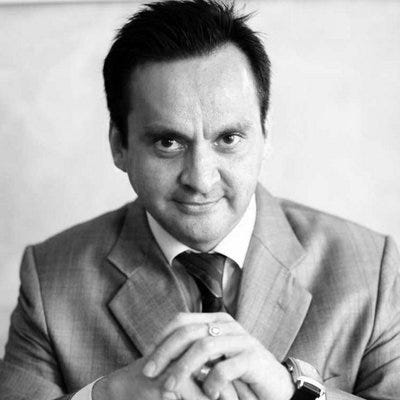
Objective of our brain dates:
We spoke three times this month, to gain insight on driving this as an entrepreneurial endeavor long term.
What we discussed:
My call with Manoj provided crucial insights on navigating the complexities of grant funding, developing a strategic approach to execution, and understanding the value exchange in funding opportunities. Manoj emphasized the importance of articulating the commercial and value-driven aspects of my project, ensuring that stakeholders see a clear alignment between their objectives and my goals. This will help in standing out during competitive grant application processes and in conversations with potential funders.
Manoj challenged me to think beyond the technical details of my cassava project and consider the broader economic and societal impact, such as food security and agricultural development in Africa. He stressed the necessity of understanding the motivations of grant providers and tailoring my pitch to reflect their key priorities. For example, focusing on how the project aligns with their mission, whether it's advancing UNSDGs, promoting sustainability, or driving economic upliftment for farmers.
He also encouraged me to approach grants with a long-term mindset, highlighting the significance of having a clear execution plan and assembling a reliable team. By securing partnerships with experts like my collaborator at Delaware State University, I can demonstrate readiness and build credibility. Manoj offered to review my cost breakdown and project documents, which could help identify additional funding sources or partnerships, including private foundations and philanthropic grants.
Lastly, Manoj advised me to critically evaluate the purpose of grants and other funding opportunities, ensuring that they align with my personal values and long-term goals. His guidance underscored the need to approach fundraising strategically, balancing the pursuit of resources with a clear focus on my project's vision and deliverables.
Action items:
1. Gain Manoj’s feedback on my cost breakdowns
2. Continue updating Manoj as I apply and get responses from grant programs.
Calls with Max Newlon - 🎩 Fundraising
Objective of our brain dates:
To keep Max updated constantly and gain his insights on fundraising, given his experience as the US President of Brain-co, a company valued at $1B.
What we discussed:
We had 8 calls over the past couple of months, but here’s what we discussed latest for the purpose of showing where my project stands.
During the last meeting, Max helped me refine my approach for an upcoming grant interview. He emphasized the importance of tailoring my responses to convey my project’s momentum and potential while aligning with the grant’s values. We focused on presenting a narrative that demonstrates how the grant would act as a catalyst for extraordinary outcomes. Max also advised against mentioning once-a-month progress calls and instead suggested framing my efforts as ongoing and dynamic to convey a sense of urgency and progress. Additionally, we discussed the technical details of the gene-editing project, including the use of RNAi technology, and the importance of clearly communicating how close the project is to implementation.
Action items:
Refine the Narrative: Prepare a concise and compelling story that ties my personal motivation, the project’s objectives, and the grant’s values into a cohesive narrative, highlighting the transformative impact the grant could have.
Master Technical Details: Review the technical aspects of RNAi technology and the specific steps for gene editing in whiteflies to confidently address any related questions during the interview.
Convey Momentum: Frame the project’s progress and future milestones in a way that emphasizes fast-paced development and readiness for implementation, ensuring a strong impression of momentum and potential.
Call with Kabir Mathur - 🎩 Technology and Business
Objective of our brain date:
Gain his insight on funding strategy and my interview with a grant program.
What we discussed:
In my call with Kabir, we discussed my project’s current progress, including securing preceptors at Delaware State University and UC Davis, and my application to six grant programs. Kabir emphasized the importance of preparing a financial roadmap, clearly articulating the problem scale, and tying my personal story to the project’s goals. He suggested starting my pitch with a concise, compelling narrative about my background and motivation to address food insecurity. For the upcoming grant interview, Kabir recommended discussing the project milestones achievable with the grant and framing it as a proof-of-concept that could lead to larger VC funding.
Kabir also highlighted the importance of increasing my "surface area for luck" through speaking engagements, mentioning my recent invitations to conferences in the UAE as valuable opportunities. He encouraged me to deeply explore areas where I find traction and be authentic in sharing my vision.
Action Items:
Prepare a Financial Roadmap: Develop a clear plan detailing the expenses for lab work, partnerships, and other milestones to justify the grant amount requested.
Refine the Narrative: Practice presenting a personal story that connects my experiences with food insecurity to the project’s mission, aligning it with the grant’s goals.
Leverage Speaking Opportunities: Use upcoming conferences to network, share the project vision, and explore potential partnerships or additional funding sources.
Call with IITA - Mon 7th Oct → 🎩 Science
Objective of our brain date:
Thanks to a reference from Julien de Meyer, I had an insightful call with a whole team from the International Institute of Tropical Agriculture (IITA). The learnings I gained from the interdisciplinary team will be a game-changer for my project's cause and our shared resolve to solve food insecurity in Africa caused by pests like whiteflies.
What we discussed:
Here are some of the key learnings and action items I gained:
1. Regulatory Complexity: The IITA team emphasised the regulatory hurdles around genetically modifying whiteflies and releasing them into the environment, especially across borders in Africa. Early engagement with regulators in countries like Kenya and Nigeria will be crucial to avoid delays.
2. Two Approaches for Whitefly Modification: I will need to consider two approaches for modifying whiteflies: (1) disrupting virus transmission by targeting specific genes and (2) implementing lethal self-destruction mechanisms. The former aligns more with my goals, but both approaches will need careful navigation of regulatory frameworks.
3. AI's Role in Targeting Genes: AI can play a crucial role in identifying the key regulatory motifs within whiteflies, such as TATA box and splice site motifs, which influence virus transmission. This could help fast-track the process of finding the right genetic targets for modification.
4. Massive Scale of Whitefly Problem: The sheer scale of the whitefly problem presents a challenge, as billions of them act like "plankton in the air." To address this, careful planning is needed to introduce genetically modified insects at scale, possibly starting with smaller, controlled trials.
5. Gene Editing for Cassava: While my focus has been on modifying whiteflies, IITA suggested exploring gene editing for cassava plants to combat cassava brown streak virus. This could complement the whitefly work, offering a two-pronged approach to tackling the disease.
6. AI for Diagnostics: IITA recommended using AI for plant disease diagnostics, as it faces fewer regulatory hurdles and could provide immediate value to farmers by identifying plant diseases earlier.
7. Collaboration with IITA Experts: I plan to continue collaborating with the IITA team for their technical expertise. Scheduling follow-up meetings will help define specific roles and next steps for this project.
8. Prepare for Challenges: I’ll need to stay flexible and open-minded, as there are numerous regulatory, scientific, and logistical challenges that might arise. Being adaptable will help keep the project moving forward.
The conversation left me more inspired than ever to continue pushing this project forward, and I look forward to collaborating with IITA along with their support for cutting edge technologies and solutions.
Thank you once again to Dr. Leena Tripathi, James Legg and Lava (IITA) Kumar for their time, insights and encouragement in our call.
Looking forward to collaborating and making further progress on this project!
Action items:
Keep them in the loop fortnightly on my progress for their constant feedback.
Call with Julien de Meyer (Former Agricultural Research Office at FAO of the United Nations) - Tue 1st Oct → 🎩 Science
Objective of our brain date:
Introductory call with Julien de Meyer (Agricultural Researcher at Illudest, Former FAO) to inform him on my progress personally, gain his further opinion on the science aspect of the project and preparing for my call with the International Institute of Tropical Agriculture (IITA).
We discussed involving farmers' voices in the process to avoid controversy around transgenic insects, as well as the trade barriers this could create, particularly in the EU and Subsaharan-Africa. Julien’s insight has been key in refining our strategy.
Action item:
We’re doing a podcast interview in December!…
..
Hats off (pun intended) to all of the experts I interacted with!
It’s a pleasure wearing many different hats and thus learning about all your different expertise that is necessary to take this project forward.
Announcing my first book I’m writing with support from Quentin Casey: author of John Risley, Clear Water and Building of a Billion-dollar Empire✍️📖
I always wanted to write a book and that’s why I’m writing a new book, codenamed “Chameleon”, which is an autobiography of one of my mentors who inspires my philosophy in business. Details are to be announced soon…
Thanks to Canadian author Quentin Casey for his insights on writing autobiographies of business people such as John Risley. After reading his book, I directly e-mailed him for advice on writing the book:
Book title will be announced in May 2025, and will be released in collaboration with a book publisher by end of 2026.
This book is a form of mentorship for me to learn from one of the world’s greatest and most unique business people (who I cannot name now for a few reasons I cannot mention here).
Announcing my new Space Technologies (Asteroid Mining) Project: Nova Mining Technologies🚀
At some point this month, I had a call with Bhavishyaa
). A shoutout to her, for her drive and quality of work, and being persistent with building in public. Bhavishyaa, I know you will accomplish great things.Since we first met in September, we had a couple of valuable chats (‘brain dates’). I enjoyed talking to you, your initiatives and your genuine passion about space is out of the world!
It reminded me of the Moonshot project I worked on, where Tom Mueller (Co-Founder of SpaceX, yes that SpaceX) validated my project.
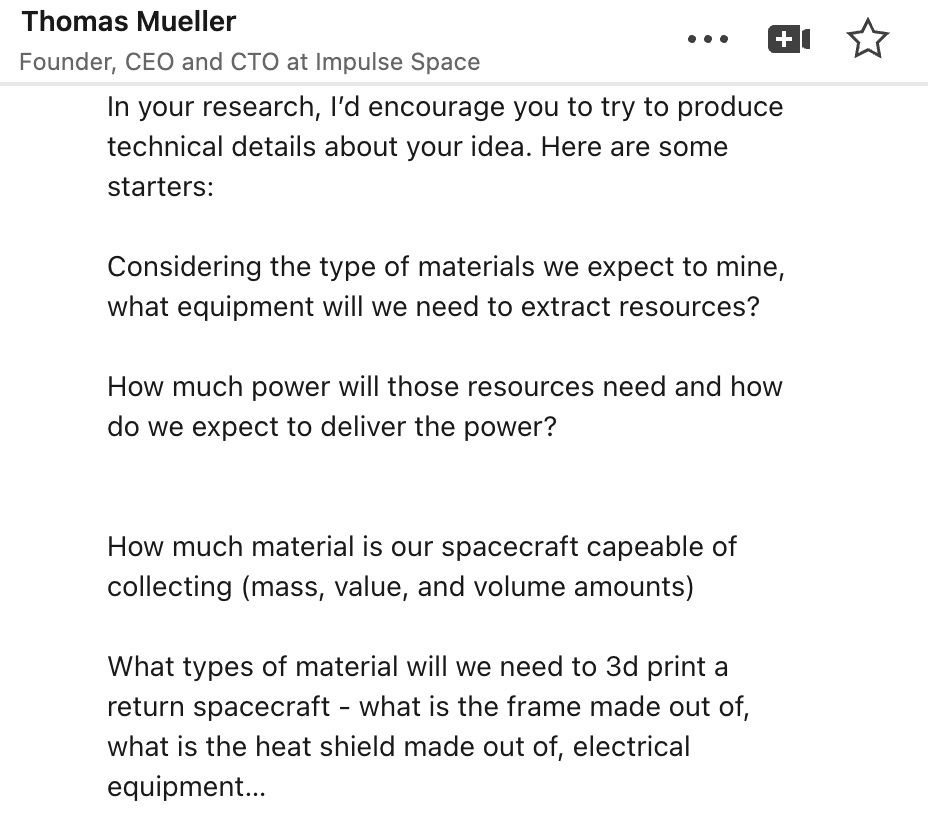
So, I started working on it again during my spare time!…
Milestones I accomplished this month with Nova Mining Technologies:
+ Further validation from industry experts from NASA (yep, aiming high—literally). Thank you, Mrinal Saha, a former scientist at NASA - who said “Carry on doing good work”. I need to consider the launch vehicle I have selected for my mission. He looks forward to seeing my contribution in space activities, as he said asteroid mining is a very interesting activity not implemented.
+ Tackling UN SDGs 7, 9, 12, 13, and 15 with tech-driven resource solutions (using the same approach as my gene editing project using principles I learned from Villars).
+ Starting with prototypes, I’m leading next-gen asteroid mining technology to address global resource shortages and fuel a sustainable future in space exploration...because, really, why stop at saving Earth when we can help the galaxy.
+ Reached out to SpaceX and Limitless Space Institute for their opinions.
I plan on taking the same stakeholder approach I did to advance my AI and gene editing project with this one.
I’m actively seeking advice to be ready to fund the first part of my dream in space, so if you’re an investor interested in this: feel free to contact me: joshroy004@gmail.com.
Attached is my one-pager.
Build in public updates coming in January..
Invited to Speak at GITEX: The Largest Tech and Business Show on Earth, XPANSE and YOUTHTOPIA🗣️
In early October, I was fortunate to have been invited as a speaker at both GITEX - the ‘largest show on Earth’ and XPANSE, where Nobel Prize winners were speaking, both in the UAE in November! Crazy, right? Combined - 220,000 people attended.
Unfortunately, I was unable to attend either this year owing to travel advices from the US and UK governments at the time, plus virtually speaking there was not allowed by them - hence you won’t find any speeches of me this year I’m afraid.
I was also due to speak at Nigeria being awardee at the Global Entrepreneurship Festival but was unable to go due to, once again, travel advices.
I hope to speak in person next year and I am happy my project was recognized by these large conferences. Excited to share my progress by then on those stages.
My priority now will be to continue the communication aspect through conferences, aiming to speak in at least three major conferences starting in the US during Q1 of 2025.
In the meantime, I spoke for YOUTHTOPIA, a non-profit based in Singapore, virtually, on tackling United Nations’ SDG 2 from a youth perspective, speaking alongside speakers such as Melati Wijsen.
Tabla performance🥁🎼
Tabla (Indian drum) is my other professional endeavour I aim to master alongside business.
🧠 Back in TKS I learned about the ‘exceed expectations’ mindset, so after my university applications are done by January I have committed to train this mindset by practicing the Tabla - for 2 hrs every day starting mid-January. I pledge to dedicate myself to master the art of tabla by consistently practicing without fail, aiming to play at the main stage of a concert next year (where there’ll be an audience of 10,000+ for this stage alone).
Fun fact: this instrument, featured in the soundtrack of the movie Charlie and the Chocolate Factory, now has an AI version for anyone at any level, which I patented as I invented the world’s first AI tabla (feel free to write to me if you’re curious to try it out for free and learn a new skill today!).
Action items to get this rolling - do by February 2025: Following the TKS focus process, release 3 videos and 4 articles demonstrating my expertise in tabla, before recording more videos of my performances in my own distinct style to show to the people who will let me play at concerts. It’ll be released here.

O-1 Visa update🇺🇸
After learning about it from my peer at TKS,
, and his journey of how it allowed him to pursue the American dream right at the start of the year in January 2024, it just so happened that (and I’ve never shared this story publicly before) that I learned I was moving to the US in March 2024 when my Dad got a promotion. I was not meant to come as we were told me or any family would not be allowed. I was sad. Until…Literally 2 days before the flight, we learned I was allowed to come! So in not even a second, I agreed and left my house in the tiny little village of Ascot where I stayed for 19 years in the UK, with nothing but a suitcase and dream.
I saw my house furniture, that has been there since before I was born, being moved away by the furniture guys right before my eyes. It was shocking at first. But now I realise, you have to be willing to sacrifice things if you want something great…
After discovering this video in January, then seeing it again after we made our move to Chicago, I was determined to pursue this. My current visa status, a type of dependent visa, doesn’t allow me to earn and limits me of other powers. Hence, with my mentors and after building up my work to meet the O-1 criteria.
I can say that I am closer and am working with a professional to file my visa, which I expect to happen at some point in 2025. I’ll be sure to share.
Thank you to Sigil for sharing his journey, and everyone who supported me whether it be by writing references or simply guiding me! You know who you are :)
Rumour has it, ChatGPT O-1 is named after the O-1 visa!…
Part 2 - Personal Life🕺
A Road Trip of 2,000 Miles (3,500 km for my American counterparts)🚗
We crossed 7 states and 1 province: Illinois, Indiana, Michigan, Pennsylvania, New Jersey, New York, Ontario and Michigan.
I couldn’t help notice but a lot of the names are taken from places in the UK.. like Grimsby, Camden, Lincoln, London and many more…
I remember a friend who I won’t name telling me a few months back in Switzerland: “Josh, I couldn’t manage a road trip. I wouldn’t like that.” I told them “It depends who you’re with!”
Video shows our drive through a snow blizzard in New York:
Much like life, there were obstacles in this long journey (which at the end felt like the blink of an eye) and unplanned - including going through a snow blizzard where we skid 180 degrees or discovering a dhaba!
Despite this, we smiled through the challenges. And, the outcome at the end was VERY, VERY worth it.
There were unplanned stops since our car failed - instead of staying overnight at Pittsburgh, we stayed at a village somewhere in the middle of nowhere of Ohio which sounds like it’s a place from 2100 - Akron.
And because our car battery was running out, we didn’t know that we would end up in Detroit and find it one of the most lively cities I’ve ever seen! Listening to Frank Sinatra, Rod Stewart and that Hawaiian Somewhere Over the Rainbow singer’s songs (perfect for an American road trip). Because of they snow storm, I saw a bit of Canada again because our route was diverted!
I’ve realised that Road trips are be serendipitous very much mimic life. Who you spend that time with matters. Where you go matters. Having Plan Bs are important, a timeline (ETAs) - so we can eventually reach the destination.
My First Thanksgiving🦃

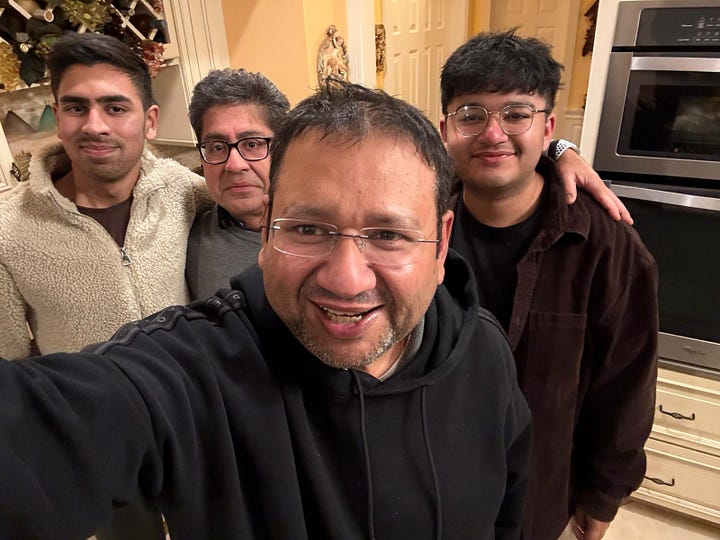
From listening to this new kind of music I never heard of, GUARACH, and most importantly…spending time with family.. it was truly a nice time we had. In the last day, we felt like we didn’t want to go back home!
What I like and saw personally about the US and the people I met there is that they find family important above all else alongside God - even if it has to be more than work, school or whatever other commitment it may be.
Some realizations I gained because of Thanksgiving:
Always be thankful… because not everyone has 4 limbs, not everyone can breathe, not everyone has food, family or a roof over their head. If you ever feel bored or facing any challenge, think of this!
Don’t expect anything from people. Work at it on your own and then you’ll earn it. Keep your expectations low, as it’s best not to depend on others as much as possible.
Often, the thing you require is sitting right in front of you! (or within)
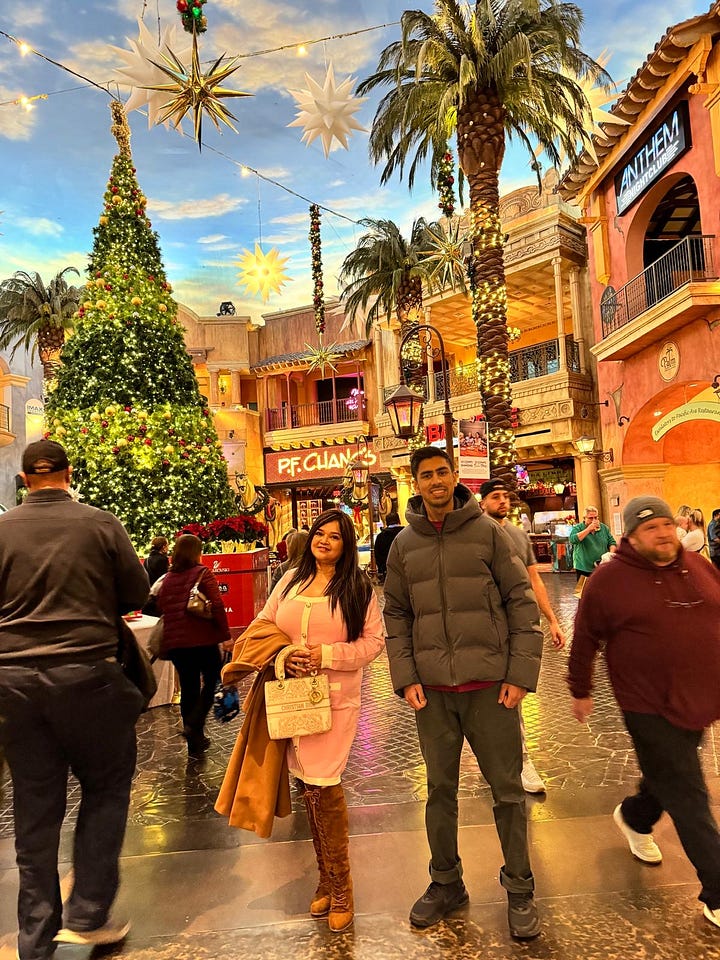
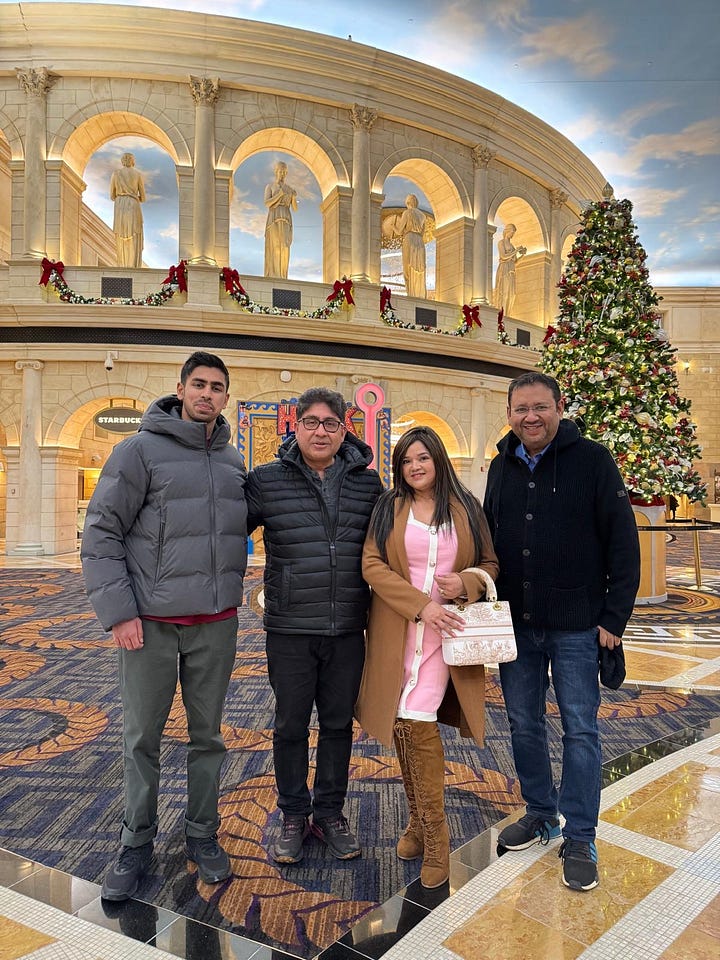
My First Bhai Phota🛕
Concurrently during Thanksgiving day, I also had my the first Bengali-Indian Bhai Phota in my life. Given I’m an only child, it was my female cousin, Simone, who decided to give me a bhai phonta Though this is unprecedented, since sisters give it directly to their own blood brothers, she decided to do this gesture for me despite breaking the traditional way of doing it - for which I’m truly grateful. What a beautiful, kind and meaningful gesture of you :)
My entire Bhai Phota conducted by Simone with help of Aunty Nilanjana can be viewed in the below video:
I learned that the meaning of this festival is that sisters wish their brothers a long and happy life.
Dance Club updates🪩
No photographs here, but I had a few more lessons finishing my foundation course at Arthur Murray in mid-October, before parting ways to move onto being able to dance in all sorts of styles from around the globe.
Big thanks for starting to teach me dance properly - Amanda, Michael, Ben Cynthia, Kate, Evelyn, and the rest of the team.
Dance is a life skill, and after realizing I’m about as coordinated on the dance floor as a giraffe on roller skates during dance nights at Villars in Switzerland, I decided to join this club—Arthur Murray Dance School—because if I can’t master the art of dancing, I might as well at least learn how to not trip over my own feet!
Here’s to turning “two left feet” into a graceful cha-cha… or at least a solid shuffle!🥂
Tapping into the Highest Level of Consciousness?🧠🧘♂️
Now coming back to the discussion of consciousness and why I asked the question of whether you’re a morning bird or night owl, here is a highlight discussion I had this month with my peers at TKS, that I’m working on applying to my professional and personal endeavours in life. Probably the most interesting discussion I had this month:
Thoughts I received:
To my readers, let me know your thoughts on this in the comments!
Comedy Club debut🗣️🤣
Oh yes, one more thing. My friend from Toronto
and I started the TKS Comedy Club, with aim of teaching the skill and art of humour to my peers and making people laugh!In a world of data and numbers, laughter is the ultimate differentiator..
That's why we set up a club where we can practice making our pitches funny hosted by (your very own TKS comedians) Shehraan & I- though, honestly, it felt as though all who attended were the comedians of the show!
Thanks Max Wen, Ayaan Naha and Alexander Boutille for attending the first one. I think we can all agree: your jokes were so funny, it felt almost like the US Presidential debate! Just kidding;)
Personally, I wanted to improve my humour and wittiness as it’s a powerful tool to relate with people, implement in storytelling and stand out from the crowd.
Reader Shout-outs
From this month’s issue, I will be selecting a few people at random who have opened and spent time reading my previous newsletters as subscribers. This month, they are:
Julien de Meyer (Former Agriculture Research Officer at FAO of the United Nations)
Krishiv Thakuria (Peer at The Knowledge Society, fellow youth entrepreneur)
Dr. Vincent Fondong (Professor, Delaware State University — my collaborator!)
Many thanks for supporting the early stages of my journey (and for being among my inspirations!). Next month, I will select another three of you as appreciation for reading through my newsletters thoroughly.
Monthly favourites & media that I consumed
📖 Reads:
The Art of Learning (re-reading) by Josh Waitzskin: reading this again to internalize how mastery is achieved through deliberate practice, resilience and focus. Waitzkin shares personal stories of excelling in his case in chess and martial arts, highlighting the importance of mindset, learning from failure, and honing intuition. It’s a guide to cultivating deep learning in any field through passion and discipline.
The Anxious Generation by Jonathan Haidt: Haidt examines the rise of anxiety and depression among younger generations, attributing it to societal shifts like overprotection, social media, and ideological polarization. The book emphasizes fostering resilience, critical thinking, and meaningful social connections to address the mental health crisis and empower the next generation for a healthier future. This read was impactful to me as I do see a correlation of technology and mental health problems among my generation, and wanted to understand what can we do. I see a lot of people glued to their phones in this day and age, and I hope that we start going out in nature again.
The Art of Witty Banter: Be Clever, Quick & Magnetic by Patrick King: My intention for this was to gain skills for the comedy club I started and improve my conversations. Teaches the skill of engaging in clever and magnetic conversations. The author provides practical techniques for humor, timing, and rapport-building to improve social interactions. Wit and spontaneity can create lasting connections and elevate your conversational charm.
🎥 Videos/Podcasts:
All-In Podcast: Trump wins! How it happens and what happened next: good discussion about how the world will change.
Stanford Graduate Business School: View from the top with Arvind Srinivas, Cofounder and CEO of Perplexity: an example of how not to do an interview from the interviewer’s perspective!
Jeff Bezos on stress: I couldn't agree more agree with Jeff Bezos' perspective that stress primarily comes from not taking action over things you have control over.
His insight resonated with me: "stress isn't necessarily about working hard, it's about avoiding problems or decisions that you haven't addressed."As he puts it, the act of addressing even a small issue - completing an assignment you've put off for days or sending a follow up email - can dramatically reduce stress, even if the problem isn't fully resolved yet.
It's the inaction that creates the mental burden, not the challenge itself.Thought I'd share this since I know quite a few of us are going through university applications in this period, working on potentially high-impact projects and being the high-performance olympic level environment we're in that TKS is.
Whether it's reaching out to the right person, submitting an application, or just achieving the next small objective, action always trumps worry. Let's keep moving forward!
Intentions for Next Month🤔
Thank you for reading this newsletter. Going into December, I’m going to continue consolidating on my AI and gene editing project, update you on an exciting development with my AI and cybersecurity project series and spend time reflecting about this year over the holiday period. See you then👋
P.S. I dedicate this month’s newsletter to my Uncle Bobby and his family—Aunty Munmun, Brother Arian, and Sister Simone, Uncle Nilanjan, Aunty Nilanjana and Brother Vedant. Even though I met all of you for the first time just this month, I am grateful for the warm welcome to my Father and I to America, and your belief in my work to save lives solve humanity’s biggest problems such as hunger through entrepreneurship (or should I say, ecopreneurship!).
To close this newsletter, below are photographs showing my family in the US❤️

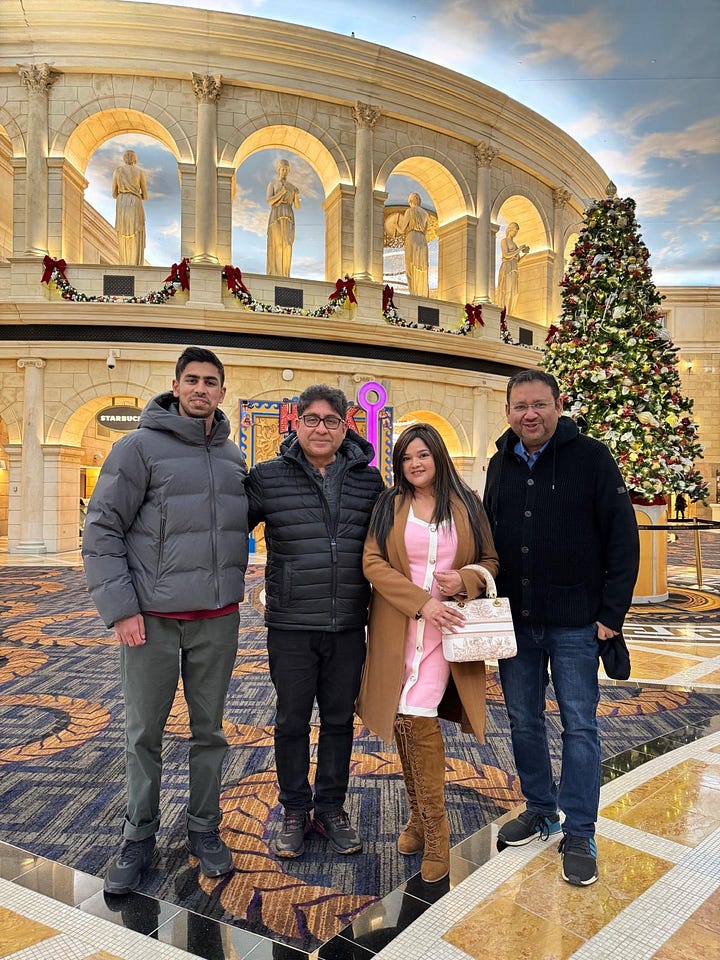



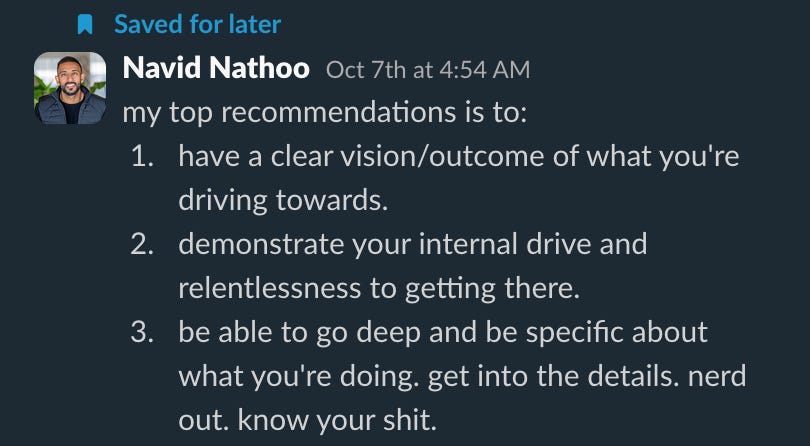






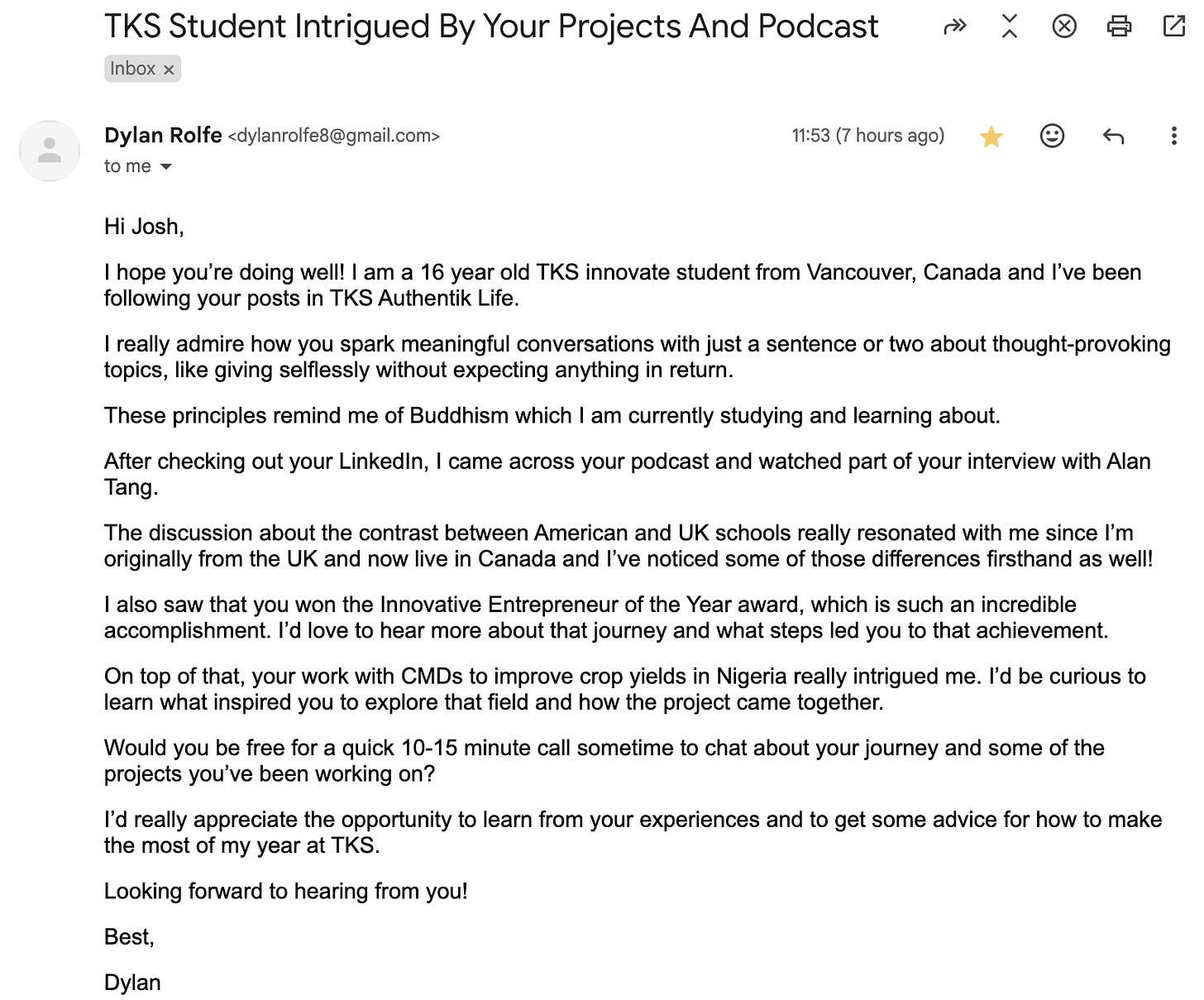


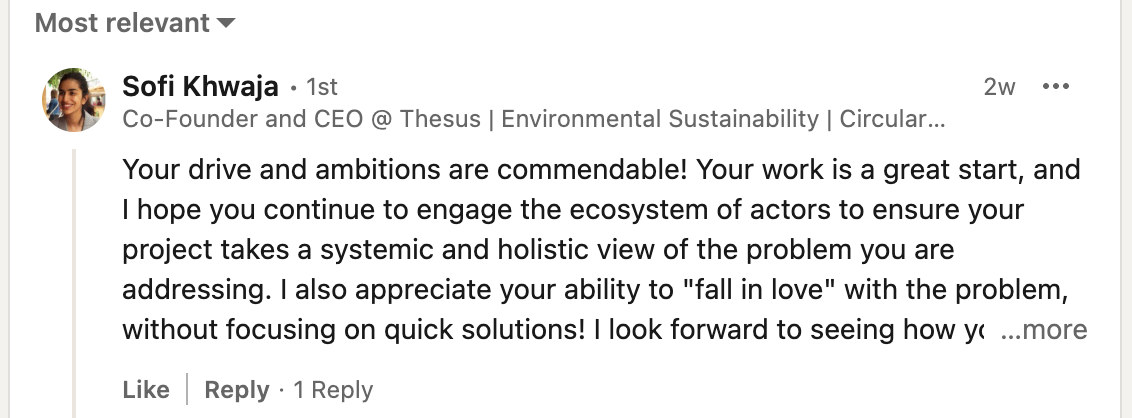

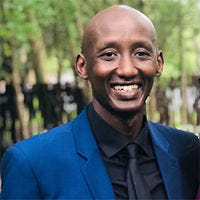
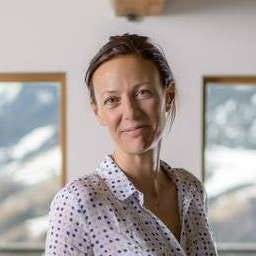

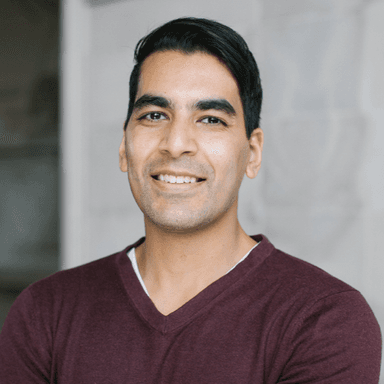






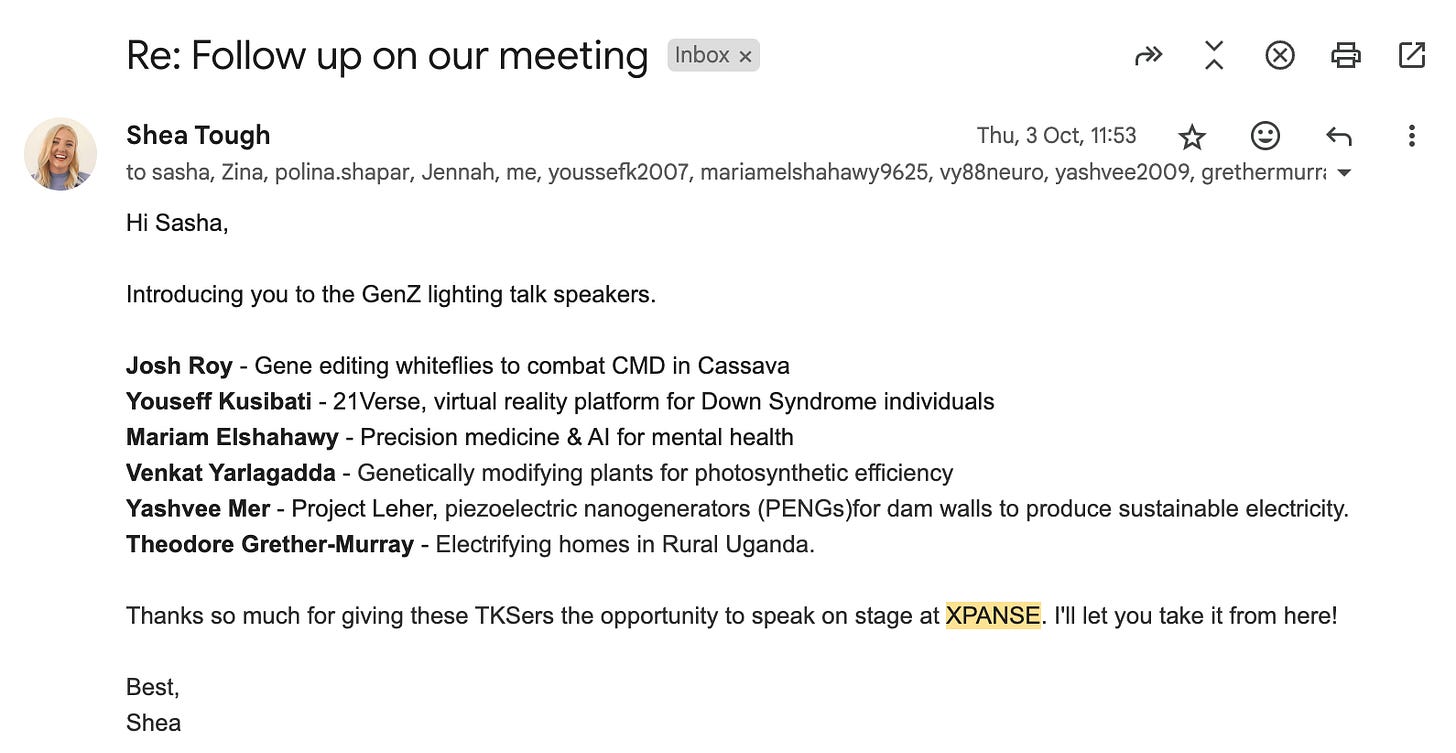

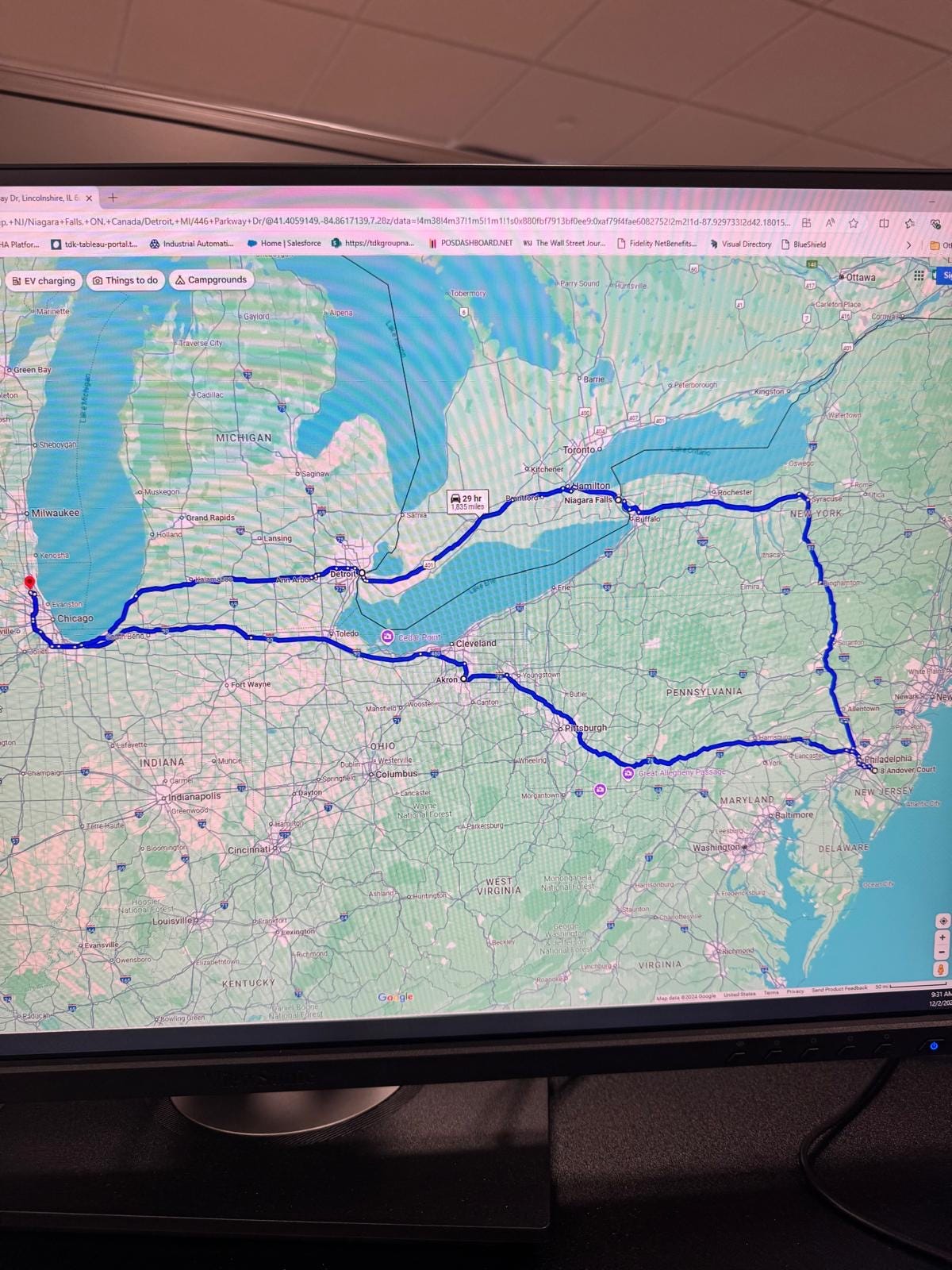


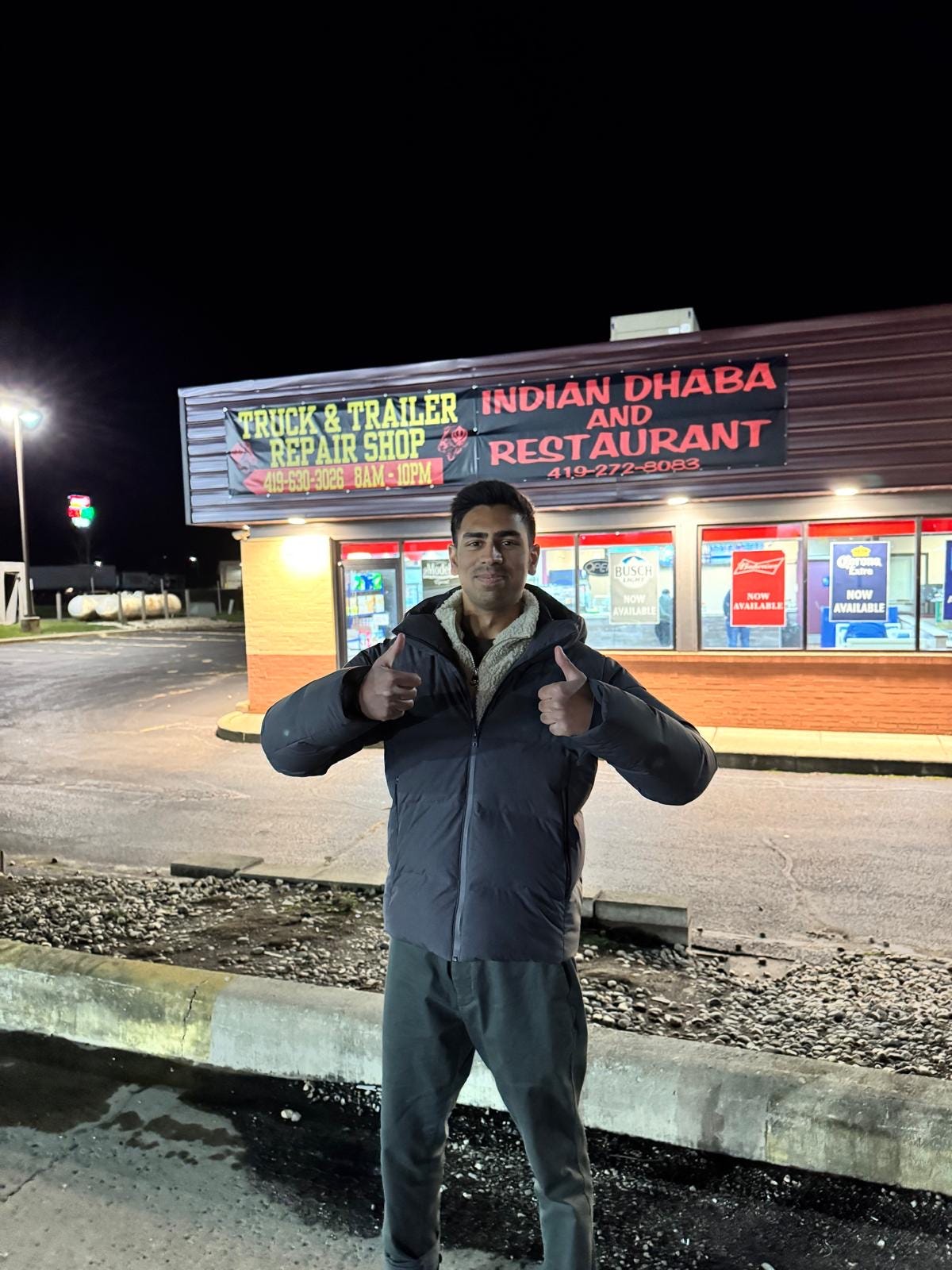
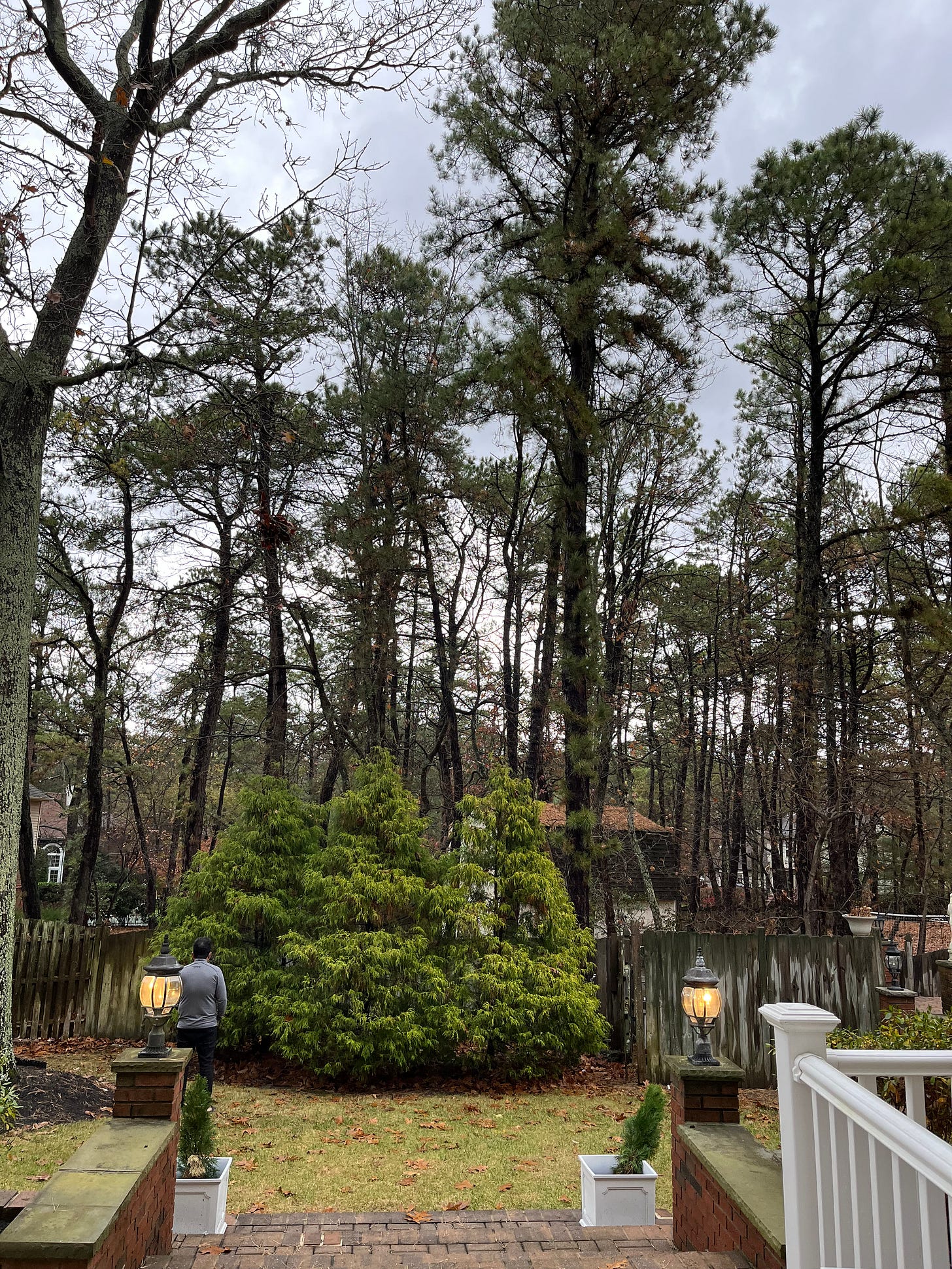

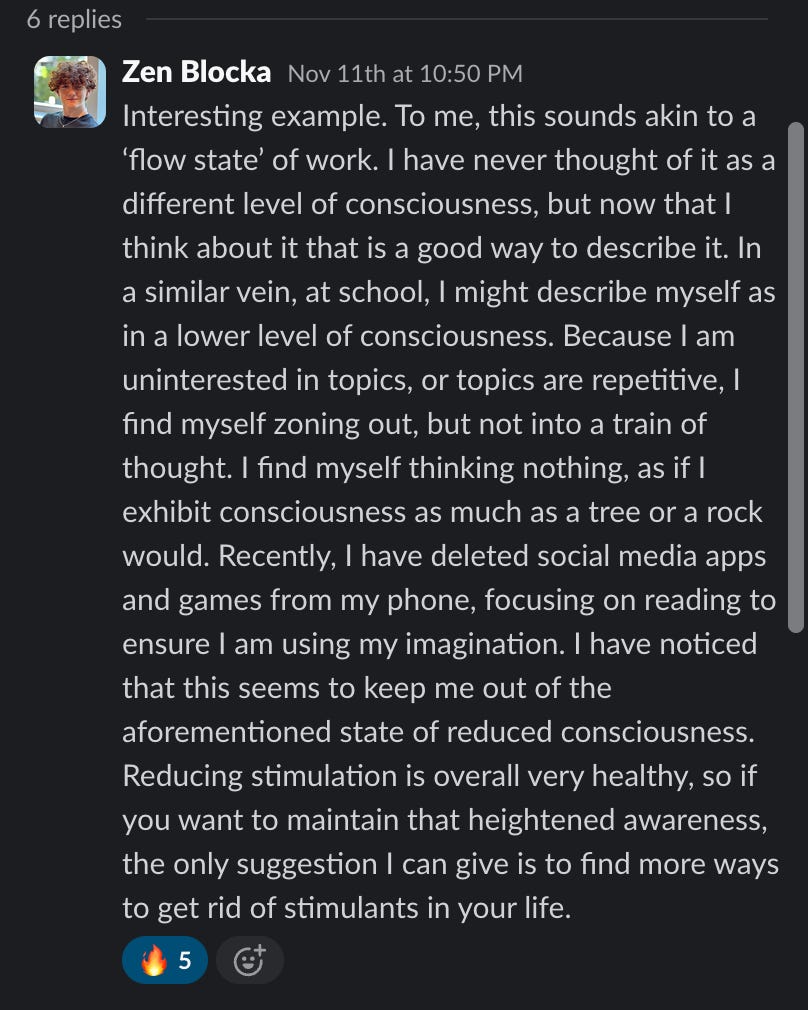







Thanks for the feature, Josh. You're so inspiring, and I had so much fun talking to you. Looking forward to your future accomplishments. :)